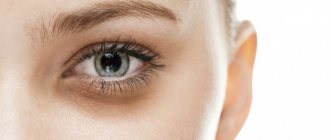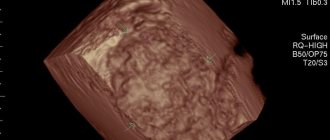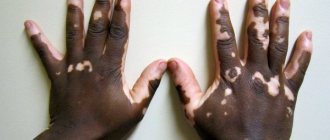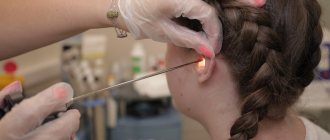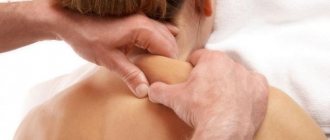Hello dear readers! Today we will look at a very interesting topic that everyone knows about. But they are unlikely to be familiar with its depth and seriousness. For example, do we know what the lymphatic system of the face and neck actually is, the scheme of which is a complex network of small vessels and nodes.
Signs of fatigue, fine lines or dark circles on your face may mean you're not spending enough time on your appearance.
.
The lymphatic system is the most significant component of the immune system as it interacts with white blood cells to defend against invading viruses and bacteria.
The lymphatic system performs 3 interrelated functions:
- removes excess fluid from body tissues;
- absorbs fatty acids without thinning the fat layer;
- strengthens the immune system.
Let's stop there. Let's step a little aside from the circulation scheme and talk about practice, about lymphatic drainage and its benefits, that is, about the massage technique and its effect on the skin of the face. We will also learn what the lymphatic system of the face and neck looks like schematically, so that during self-massage we do not cause harm to a system that is important for the functioning of our body.
What is lymphatic drainage facial massage
The lymphatic system is an important part of your immune system. It helps to get rid of accumulated toxins in the body. Lymph flows through the body, a special fluid of the lymphatic system that collects waste and other nasties and sends them to the lymph nodes, where it is all neutralized. At the same time, it delivers the nutrients they need to the cells. When a malfunction occurs in the lymphatic system and the lymph stagnates, lymphatic drainage massage comes to the rescue.
Lymphatic drainage is offered by many cosmetologists. It is done to improve the appearance of the skin, remove puffiness, dull color and irritation of the skin. Some plastic surgeons even specifically refer people for lymphatic drainage massage. Because sometimes the swelling after a facelift surgery, which should go away in a couple of weeks, does not subside within six months. In this case, if you do this procedure three times a week for two weeks, the swelling can quickly disappear. Thanks to facial lymphatic drainage, stagnant fluid is returned to circulation.
Some even believe that lymphatic drainage massage can replace facelift surgery. And this is true, because it is much safer and more effective.
Lymphedema of the face
Head and neck lymphedema is a very common late treatment side effect for head and neck cancer. It is a chronic disease with potentially severe consequences for quality of life. Unfortunately, knowledge of the condition is poor and clinical studies are rare. Here we provide an overview of the current clinical understanding of the condition and how it can be managed.
Want to know more about how your experience compares to other patients? Check: “Is my head and neck lymphedema “normal”?”
Contents [hide] 1 Part 1. Clinical characteristics of head and neck lymphedema 1.1 what is lymphedema? 1.2 What is head and neck lymphedema and how does it occur? 1.3 What are the symptoms of head and neck lymphedema? 1.4 How is head and neck lymphedema diagnosed? 1.5 Risk factors for developing head and neck lymphedema after cancer treatment 1.6 Prevalence of head and neck lymphedema after cancer treatment 2 Part 2. Prevention and treatment of secondary head and neck lymphedema 2.1 Prevention and self-management of head and neck lymphedema after cancer treatment 2.2 Professional management of head and neck lymphedema after cancer treatment 2.2.1 gold standard treatment 2.2.2 Surgical options 2.2.3 Pharmaceuticals and supplements 3 comments or questions? 4 links Part 1: clinical characteristics of head and neck lymphedema what is lymphedema?
Lymphedema is a chronic condition of swelling caused by damage to the lymphatic system (“secondary lymphedema”) or malformation of the lymphatic system (“primary lymphedema”). Disruption of the normal function of the lymphatic system in an area of the body results in insufficient clearance of lymphatic fluid (lymph) from that area. When the blood transports oxygen and nutrients to the body's cells and collects waste for excretion, 80% of the fluid returns to the bloodstream while 20% enters the lymphatic system as lymph, a colorless liquid that is left over the volume. Eventually the lymph returns to the bloodstream in the heart.
More than just a fluid collection system, the lymphatic system is a vital component of the immune system, transporting immune cells around the body. Consequently, the blockage of lymph flow causes fluid buildup as well as other harmful changes, including localized immune depression. Lymphedema is typically seen in the extremities (arms and legs), but is also very common in individuals treated for head and neck cancer. Find out more about lymphedema here.
What is head and neck lymphedema and how is it caused?
Secondary lymphedema of the head and neck typically results from damage to the local lymphatic system by cancer biopsy or treatment (see Figure 1 for an illustration of some head and neck lymph nodes and vessels). Removal of lymph nodes during cancer biopsy or tumor resection is the leading cause of secondary lymphedema in patients with head and neck cancer. This is a direct consequence of the essential role of the lymph nodes in collecting lymph fluid from small lymphatic vessels and draining it into larger vessels leading to the heart.
Radiation therapy can also cause damage to any remaining lymph nodes and lymphatic vessels located in the radiation field, another potential cause of lymphedema. Unfortunately, a large number of nodules in the head and neck area make radiation-induced damage more difficult to avoid. Disturbance of the normal lymphatic flow in the head and neck leads to a buildup of lymphatic fluid, followed by chronic and progressive swelling that can affect various areas of the head, neck and face.
Lymphatic glands and vessels-of-the-head-and-neckFigure 1. Superficial lymphatic glands (nodes) and lymphatic vessels of the head and neck (Ref. 1). As with lymphedema of the arm or leg, head and neck, lymphedema must be caught and treated early to relieve symptoms and prevent or delay progression of the disease.
Uncontrolled swelling causes additional damage by overstraining the remaining normal lymphatic vessels, and can also initiate a cascade of harmful events, including localized inflammation, immune system impairment, and eventually worsening swelling (which is called “non-punctate lymphedema”). further exacerbating the problem.
Hardening is the result of compositional changes occurring in tissue, including fibrosis (scarring), proliferation of connective tissue, and accumulation of fat (and to a lesser extent muscle and bone) - a possible result of altered stem cell behavior. This advanced stage of the disease is less responsive to typical treatments and may require surgery (see below).
What are the symptoms of head and neck lymphedema?
The main symptom of head and neck lymphedema is swelling, usually developing 2-6 months after cancer treatment. In the early stages of head and neck lymphedema, swelling can be difficult to observe. Head and neck lymphedema can develop internally in the larynx and pharynx (which are the various structures that make up the mouth and throat), or externally in the neck and face, or a combination of both, depending on which lymphatic channels are obstructed.
Less commonly, the tumor may progress to the point where it creates serious functional problems such as difficulty breathing and swallowing, as well as obvious problems with body image and associated social output arising from neck and facial deformities (Art. 2). Overall, head and neck lymphedema has the potential to seriously impair patients' quality of life. To see how your symptoms compare to a group of 1,202 head and neck cancer patients at MD Anderson Cancer Center (MDACC) in Texas, check out our post: “Is my head and neck lymphedema 'normal'?”
Symptoms of mild to moderate head and neck lymphedema may include:
Visible swelling under the chin, in the neck, or in the face, including the eyes and lips. A feeling of tightness or limited movement in these areas, including the jaw or shoulders. Symptoms of moderate to severe head and neck lymphedema may include:
Significant swelling of the face and neck Swelling that feels hard and hard to the touch Visual or auditory impairment Difficulty breathing, swallowing, eating or speaking Congestion of the nose, chronic ear pain How is head and neck lymphedema diagnosed?
Lymphoscintigraphy or other imaging techniques that involve injections of contrast agents to visualize lymphatic fluid flow pathology may lead to a definitive diagnosis of lymphedema, but it is usually diagnosed using gentle means. The presence of lymphedema is usually assessed based on observations, physical examination findings, the patient's symptoms, and a review of the patient's history. Alternative causes of the tumor need to be determined. Accordingly, early stages of the disease can be particularly difficult to diagnose.
Subjective patient findings (such as a feeling of "tightness" or "heaviness") are often the earliest indicators, while objective measures of volume change may be more difficult to obtain. This is especially true for early internal lymphedema and early external lymphedema in areas such as the chin, where there is no symmetrical counterpart that can be used for comparison (unlike swelling on one side of the face that can be compared to the other unaffected side).
External lymphedema is often classified into one of four common scales. However, standardization is lacking, and these scales appear to be imperfectly suited to capture the stage of head and neck lymphedema (Model Number/Ref. 3).
A modification of the Foldy score for categorizing extrinsic lymphedema does a good job of capturing the range of soft tissue changes seen with the progression of untreated head and neck lymphedema (see Table 1), although further validation of the score is warranted (see Table 1). 4).
Feldi Lymphedema Scale Rating Modified for Head and Neck Table Lymphedema 1: Modified Feldi Scale for Head and Neck Lymphedema Clients Practically speaking, head and neck lymphedema secondary to cancer treatment can be defined as a tumor that develops three or more months after treatment (ref. 5). This is during the time that normal acute post-treatment swelling is usually visible.
External lymphedema is identified by visible swelling of the face or neck, and can best be quantified using a “composite facial score,” consisting of seven measurements, as well as a “composite neck score,” consisting of 3 measurements (Model Number/Ref. 4). Measurements are needed to establish baseline conditions, monitor changes, and improve tracking.
In contrast to internal edema, swelling of the mucous membrane and soft tissues of the pharynx and larynx is visible. Internal lymphedema is more difficult to quantify. Endoscopy or a speculum examination by an experienced practitioner can be used to measure 11 internal anatomical sites and two Patterson sites (item 5).
Risk factors for head and neck lymphedema after cancer treatment
Fundamentally, the risk of lymphedema increases as a function of lymphatic damage. Perhaps the best predictor of likelihood is the number of lymph nodes that were removed during surgery; The more nodes removed, the greater the likelihood of developing head and neck lymphedema. Studies of head and neck lymphedema show that the total dose of radiation therapy, as well as the number of days of radiation therapy, also increases the risk of developing lymphedema (Ref. 6).
In addition to the number of lymph nodes removed, additional factors may change your chances of developing head and neck lymphedema. A study of arm lymphedema secondary to breast cancer shows that the chance of lymphedema increases for patients who:
Have received chemotherapy before or after surgery (Ref. 7), Have a high Body Mass Index (BMI), Have genetic factors associated with lymphedema Report lower overall health scores (Ref. 7)
Hardware massage
Lymphatic drainage facial massage can be performed with two devices: microcurrent and vacuum.
Microcurrent device.
The effect of current stimulates the muscle fibers of the face. During the procedure, the muscles contract and relax, which improves microcirculation, swelling subsides faster, and the cells begin to receive more nutrients.
At least that's what they say. The impulses, entering the deep levels of the epidermis, irritate and strain the muscles. This will cause the facial muscles to “pump up”, and it will only look even more swollen.
Vacuum device. Have you ever done or heard about cupping massage? So here is the same scheme. For vacuum massage, either a device with small suction cups or the same jars, only with a smaller diameter, are used. In the affected area, capillaries expand, blood flow increases, and metabolic processes are activated in cells and tissues. Also, thanks to the significant expansion of pores in the affected area, the skin is quickly cleansed of sebum and other impurities. Jars for the procedure can be ordered at www.beauty365.ru.
Vacuum massage is not recommended for:
- pregnancy
- tumors
- inflammatory processes in the body
- temperature
- skin diseases
Manual lymphatic drainage massage
There are three types of manual techniques:
- Superficial lymphatic drainage.
During this procedure, the specialist performs circular movements with gentle pressure. This method stimulates the work of capillaries, which are responsible for the accumulation and removal of fluid from the body. This massage activates the work of lymph and relieves vascular spasm. - Deep lymphatic drainage.
This method is characterized by faster and more intense movements. It is thanks to this that the deep muscle layers and lymph vessels are worked out. Deep massage activates blood flow, dilates blood vessels and increases muscle tone. Typically this method is used on the abdomen, buttocks or thighs. - Point lymphatic drainage.
Here the specialist acts specifically on the lymph nodes. This is usually where the session begins.
If you do not adhere to the massage lines, the procedure will be in vain. Here are the main directions:
- from the center of the forehead to the temples
- from the tip of the nose to the center of the forehead
- from the wings of the nose to the temples
- from the corners of the mouth to the center of the ear
- from the center of the chin to the earlobes
To feel the results, it is recommended to perform this massage at least once a week. In general, everything is very individual and depends on factors such as individual characteristics and problems.
Relationship between the lymphatic and circulatory systems
There are many groups of lymph nodes on the face. The nodes are connected by ducts through which lymph, a clear liquid, flows. The parotid nodes receive lymph from the forehead and the outer half of the eyelids. The facial nodes form a “chain” (ducts with nodes) that runs parallel to the blood vessels. The ducts carry lymph from the eyelids, nose, lips and chin. The lymph is then directed to the jugular ganglia of the neck, which form chains around each of the jugular veins and pump the lymph into the large lymphatic or thoracic duct.
Lymphatic drainage and its benefits
This is a type of massage to remove excess fluid and toxins from the body, treat cellulite and swelling.
Lymphatic drainage does not thin a person, as it does not remove fat, but rather reduces volume to eliminate swelling in the body. The massage should be done in the direction of the lymph nodes, applying slight pressure to the skin, as excess pressure can obstruct lymph circulation and compromise its benefits.
You should know that only a qualified specialist can perform lymphatic drainage efficiently. A bad massage can cause poor toxin mobilization and clogged nodes, which can lead to health problems.
Benefits of Facial Lymphatic Drainage
- promotes fluid drainage;
- reduces dark circles and bags under the eyes;
- eliminates signs of fatigue;
- improving blood circulation and supplying the body with nutrients;
- cell restoration and improvement of skin condition;
- increasing oxygen supply;
- relieves inflammation and prevents the appearance of acne;
- relaxes facial muscles, ideal for relieving stress, calms the nervous system, improves sleep;
- treats scars and relieves swelling.
Lymphatic drainage is not recommended for people with high blood pressure, rheumatism, asthma, lupus, cancer, arthritis, thrombosis or thyroid problems.
What are the advantages and disadvantages of the procedure
A 2015 study found a direct link between a malfunctioning lymphatic system and sagging skin. This massage can also be useful in preventing aging.
Since the lymphatic system plays a huge role in immunity and healing, the benefits of this procedure are endless. When it comes to the skin, problems such as puffiness, acne, dryness, dullness and even skin sensitivity can be resolved with a simple lymphatic massage. The highest concentration of lymph nodes is found on the face and neck, meaning this type of massage can really produce results.
During the procedure, the effect occurs directly on the lymph nodes, which accelerates the movement of fluid in the body. Lymphatic drainage helps cleanse tissues of waste and toxins, remove dark circles under the eyes, and wrinkles on the skin. It returns the skin a healthy appearance and radiance.
The disadvantages of the procedure include the fact that it is temporary. It needs to be done regularly - at least several times a week.
Moreover, its effectiveness also depends on your lifestyle. Do you get a massage, but eat poorly, smoke, drink alcohol? In this case, it will be difficult to achieve a good result.
Disadvantages also include contraindications. Of course, any procedure has them, but here they can appear only after a few weeks - pimples and burst blood vessels.
In addition, this procedure in salons is quite expensive, and to achieve good results, you need to go to 15-20 such sessions.
Lymphatic anatomy of the face and neck
Facial lymphatics follow a path parallel to the facial and jugular veins. Therefore, in order to understand the lymphatic anatomy of the face, it would be correct to briefly study the arterial diagram of the face.
The artery of the neck is represented by the primitive carotid arteries (one on each side of the neck), at the level of the hyoid bone (under the lower jaw) in the form of two branches:
- the internal carotid artery is responsible for delivering blood to the brain;
- The external carotid artery branches into various structures in the neck and also continues on the face as the facial artery, supplying blood to the facial muscles.
The facial vein takes oxygenated blood and carries it to the jugular vein. There it joins the subclavian vein, forming the brachiocephalic venous trunk (in the chest). As a result, a superior vein is formed, which ultimately ends in the right atrium of the heart.
How to avoid possible complications
Complications may appear if all contraindications are not taken into account. Also, if done incorrectly, redness or swelling may occur. In order to avoid these and other possible consequences, the specialist must monitor the patient’s condition and reaction. If you do self-massage, then be even more attentive and careful.
We constantly repeat that massage should be performed strictly along massage lines. If you do it against the massage lines, gather the skin into folds, press hard on the skin while stroking - all these actions lead to the formation of additional wrinkles and ptosis (drooping) of the skin, especially in the area of the nasolabial triangle.
Who will benefit from the procedure?
Lymphatic drainage massage will be useful for everyone, even as a preventive measure. But you should especially pay attention to this procedure if:
- Are you worried about constant swelling?
- Have you noticed an unhealthy complexion?
- you have sagging and sagging skin
- the skin began to actively age
- mimic wrinkles appeared
- muscle tone has decreased significantly
- There are skin problems (scars, acne, stretch marks)
- Are you worried about general fatigue?
All these signs may indicate malfunctions of the lymphatic system.
Preparation for facial lymphomassage
If you are going to a salon for a procedure, there are not many preparatory steps. During the entire course it is recommended not to drink or smoke. You need to monitor your diet and the amount of fluid you drink, especially before bed. If you drink a lot at night, severe swelling is expected in the morning.
In order to do lymphatic drainage facial self-massage at home, prepare everything you need: facial oil or a good rich cream. We recommend trying Squalane from Beauty 365. It is a lightweight sugar cane oil that is great for massage.
Some people take various tools to help them, like jade rollers or gua sha stones. If it’s difficult for you to do a massage with your own hands, then you can take a gua sha scraper, there will be a slightly different technique, be sure to stick to it.
As for jade rollers, you also need to know how to use them. Many people simply take them and roll them back and forth, thinking that now they will smooth out everything that is needed and disperse the lymph. Not so simple. In order to disperse lymph, you need to move in certain directions.
Factors that cause swelling on the face
So, swelling on the face is a consequence of weak lymph outflow, which in turn leads to stagnation of intercellular fluid. Similar disturbances in the outflow of lymph occur if the drinking regime is disrupted, for example, when an insufficient amount of water is systematically consumed throughout the day. Other factors that cause swelling include:
- chronic heart and kidney diseases;
- allergy;
- alcohol consumption;
- pregnancy.
If for unknown reasons swelling appears every day, you should consult a doctor. It will help rule out serious diseases that may be causing swelling. If facial puffiness in the morning is not associated with health problems, then you should reconsider your usual lifestyle. The causes of edema can also be:
- stress – strengthens the temporomandibular clamp and interferes with the outflow of lymph;
- Excessive eating before bed – the body does not have time to process food and remove toxins;
- prolonged fasting, unbalanced diets, unhealthy diet;
- a sedentary lifestyle, long work at the computer - also lead to disruption of lymphatic movement;
- using fatty creams before bedtime;
- An uncomfortable pillow, the habit of sleeping face down - blood circulation in the head and neck is impaired.
If there is edema, it is necessary to maintain a drinking regime, which means that you need to drink at least 1.5 liters of water per day. However, after eight in the evening you can drink a maximum of 1 sip of water every half hour. Before going to bed, it is also undesirable to eat salty and spicy foods, as they retain fluid in the body.
To avoid swelling, you need to adhere to a healthy lifestyle, walk in the fresh air more often and maintain physical activity. It is better to finish all cosmetic procedures 3 hours before bedtime.
How to massage yourself
If you don’t want to spend money on a cosmetologist, then read carefully how to do facial lymphatic drainage with your own hands. Also stick to the technique we wrote about above.
First - cleansing. Use a special product like soft foam or mousse. It is necessary to thoroughly cleanse the skin of cosmetics and other contaminants.
Warm up. Take some serum or oil and apply it to your hands. First you need to warm up the cervical lymphatic trunk. Using light circular movements clockwise, first massage your neck, then your face and head. Using circular movements, massage these areas in the following order:
- Chin
- Cheeks
- Bottom of eyes
- Forehead
Now tapping, vibrating movements and pinching. All these manipulations help stimulate blood circulation.
Finish the procedure with stroking to now soothe the skin.
Watch the video on how to do a vacuum massage using a miracle jar.
First, apply oil or serum to your face. Start the massage from the chin. Perform the movements first on the left side, then on the right. Gradually move to the upper zones.
How often can you do lymphatic drainage facial massage?
Cosmetologists recommend performing this massage several times a week or even every evening before bed. It all depends on how busy you are. If you do it at night, it will help get rid of puffiness in the morning, and the skin will recover faster after sleep.
Do you want to get rid of swelling, remove wrinkles and restore skin tone? Lymphatic drainage is a great help in solving these problems. But it will be even more effective if you combine proper nutrition, exercise and cleansing the body. In just four weeks at the “Flourish” marathon, you will work on all problem areas, learn how to massage with cups so that there is no redness, cleanse your body of toxins and more. Interested? Then read the details about the marathon below.
Lymphatic drainage massage: who needs it?
Lymphatic drainage is a massage that affects the deep layers of the dermis.
The combination of pressing, stroking and vibrating movements of varying intensity allows you to stimulate cellular metabolism, normalize blood flow, and accelerate lymph drainage. As a result, the skin renews itself faster, acquires a healthy color, elasticity and density, and swelling disappears. Properly performed lymphatic drainage massage can:
- tighten the oval of the face;
- soften nasolabial and nasolacrimal folds;
- eliminate bags under the eyes and open your eyes;
- get rid of a double chin;
- smooth out small wrinkles;
- improve skin perception of creams, serums and other cosmetics.
Lymphatic drainage massage tightens flabby skin and helps reduce swelling.
The effect will be noticeable after the first sessions. Massage can quickly tone and rejuvenate sluggish, flabby, stretched skin. Cosmetologists recommend carrying out lymphatic drainage massages in courses of 10-12 procedures, followed by a break. In the process, you can use basic plant and essential oils, combine massages with peelings, deeply nourishing masks or tightening serums.
Salons offer a variety of lymphatic drainage massage options. Follow the most popular Spanish, Zogan (Japanese), vacuum. Hardware techniques are also actively used, deeply working all layers of the dermis and subcutaneous fatty tissue. However, not everyone has the opportunity to constantly visit the salon. Girls who do not want to regularly go to a massage therapist can learn basic techniques by studying detailed diagrams and watching several video tutorials posted on thematic blogs.
Among the main benefits of massage at home:
- ease of implementation;
- versatility;
- takes a little time;
- the ability to combine with other care procedures;
- quick results.
Home treatments can save you a lot of money. Prices for lymphatic drainage massage in Moscow salons start from 3,000 rubles.
The maximum benefit will come from procedures using a combined technique. They combine techniques from different techniques; the duration of treatment of each area depends on the characteristics of the face. Cosmetologists recommend paying special attention to problem areas: the lower jaw and chin, cheeks, and upper neck.
Tapping and pinching movements will help improve tone.

